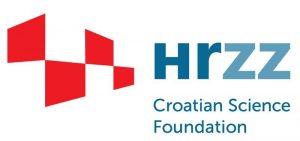Basic information:
- Project name: Boron-based 2D materials, BoBaMat (2D materijali bazirani na boru)
- Funding by: Croatian Science Foundation (HrZZ)
- Grant No.: UIP-2020-02-1732
- Principal investigator: dr. sc. Marin Petrović
- Associates: dr. sc. Borna Radatović, mag. phys. Patrick Seleš, mag. phys. et matech. Sherif Kamal
- Duration: 01/2021 – 12/2025
- Amount of funding: 260.000,00 EUR

Project abstract: Synthesis of two-dimensional (2D) materials and their integration into more complex systems are currently very active fields of scientific research. By stacking high-quality 2D materials into complex heterostructures, it is possible to obtain new systems with improved functionalities, which are often interesting for various applications in technology. The focus of this project is on research of boron-based 2D materials: hexagonal boron nitride (an insulator), BCN alloy (a semiconductor) and borophene (a metal). Goals of the project are synthesis optimization of those materials on low-cost and readily available substrates, development of procedures for their transfer onto arbitrary substrates, and characterization of the corresponding vertical heterostructures. The emphasis is put on achieving and maintaining of high structural quality of 2D materials in all segments of research, which is crucial if one wants to keep their intrinsic properties. In addition, the project will enable construction and characterization of several prototypical devices composed of boron-based 2D materials, allowing for the investigation of their technological potential. 2D materials will be synthesized on metal substrates by utilizing chemical vapor deposition in an ultra-high vacuum chamber that will be acquired within the project. The design of the chamber will allow synthesis of several samples per day, which will ensure a reliable source of high-quality 2D materials indispensable for their thorough research from all aspects, from synthesis and all the way to applications. The initial quality check of 2D materials shall be performed by means of electron diffraction, and further structural analysis and characterization of the electronic structure will be carried out by scanning probe microscopies, scanning electron microscopy and photoelectron spectroscopy.
See more about project’s:
